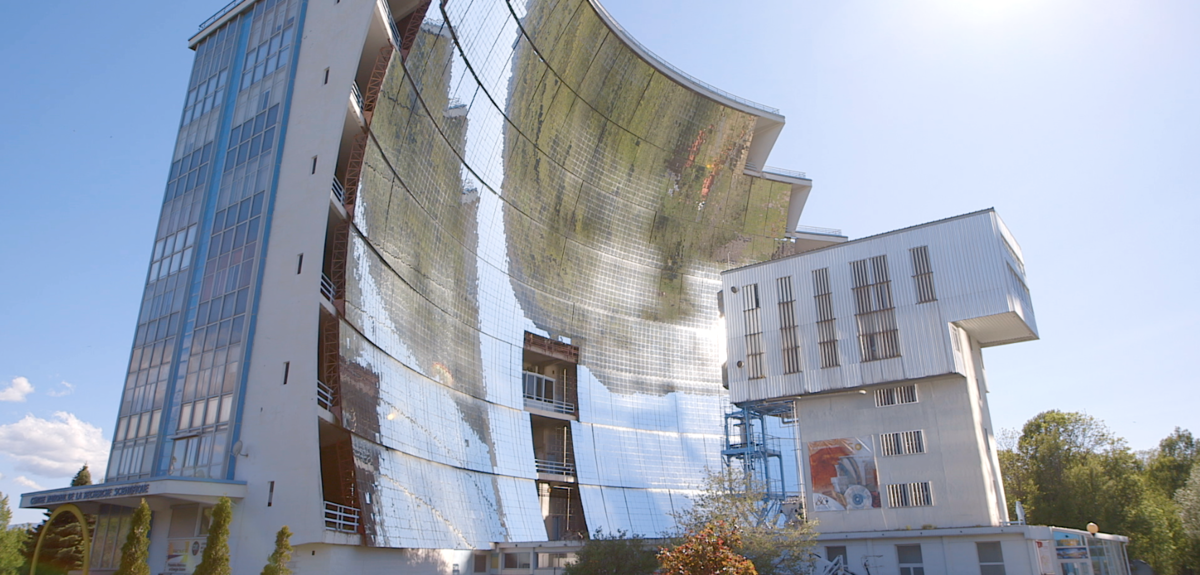You are here
This flame contains an energy that could fuel the cars of tomorrow. And there`s not a trace of petrol to be found. The fuel of the future could be renewable and completely emissions-free.
LIVE Fabien Halter
“So we’re in the process of burning a powder comprised of metallic particles in open air, and we’ve managed to stabilize a flame. This flame is full of energy, which we can see by how much light it emits.”
Faced with the reality of climate change, finding alternatives to hydrocarbon fuels has become a priority. As well as being abundant in nature, powdered metals like magnesium or aluminum burn very well in open air.
ITW Fabien Halter
“If we want a substitute for traditional fossil fuels we need something comparable. The advantages of powdered metals, aluminum and magnesium for example, is that their potential energy is very similar to that of a fossil fuel. That’s really important to us. The second major advantage is the absence of carbon emissions. These metallic powders don’t contain any carbon and therefore can’t produce carbon dioxyde.”
This combustion is produced by oxidation at high temperatures. At the touch of a flame, the metal reacts with oxygen from the air to create a metallic oxide. But before this powder can power our cars, there are a number of challenges to overcome. scientists are looking to optimize this chemical reaction, that is already used to propel rockets, and adapt it for ground vehicles. This means manufacturers will have to develop new; specially adapted engines..
ITW Fabien Halter
“The massive difference between metallic particles and hydrocarbons is principally in the fact that thermal energy is emitted in the form of light. It gives off massive amounts of heat. Thankfully there are a number of available options to recapture this energy. The first is to use a process which converts that light into electricity with photovoltaic systems. That could be a good alternative. The second is to take refractive materials which could absorb the light, convert it to heat, and then we could transfer that heat to air that could then turn a gas turbine for instance.”
Another major challenge posed by metal combustion: avoiding pollution. Other than nitrogen oxides, there are also a number of other pollutants to deal with.
ITW Fabien Halter
“Above all what we want to avoid is the emission of metallic oxide particles that could find their way into the atmosphere. That’s something that just isn’t an option. Our objective is to capture the particles that we’ve produced before they ever exit the motor.”
This is even more important as metal oxides are not a renewable resource. The by-product of combustion could be recycled and restored to its pure metallic form. In other good news, this regeneration could be carried out with the help of the most renewable energy available: the Sun.
We’re in the Pyrenees Mountains where, since 1969, scientists have been researching concentrated solar energy. These massive ovens generate over 1MW of power. They’re the only ovens of their kind. This site has enabled numerous advances in researching materials at high temperatures and the conversion of solar energy.
ITW Marianne
”The trick is to restore the magnesium from the oxides formed in combustion while traveling. To regenerate them with clean solar energy so that they can be reused in a vehicle.”
In this case, metal oxides are recycled in a reaction called “Carbo-Reduction.”
ITW Marianne
“Here we’re focusing the Sun’s rays. We can concentrate them up to 15,000 times their original power and raise the temperature of a sample very quickly, by 2,000 degrees in a few seconds. That’s essential. We can’t achieve that with other kinds of heating. At the first floor of the building, there’s a heliostat, which is a mirror that can send solar rays vertically via these parabolas and then concentrate them at the level of the foyer. So it’s at the foyer that we can place the magnesium oxide and begin carbo-reduction.
“So we intensify the concentrated solar rays until the temperature of the sample is ready to begin its reaction. We can see it vaporize through the viewport before condensing into magnesium.”
This injection of solar energy enables the separation of metal and oxygen. The metal regained from the process is pure, its potential energy restored.
LIVE Marianne
“We collect these magnesium particles deposited in the filter. And now the cycle is complete as it can again serve as fuel.”
These metallic powders serve as a medium to store and transport solar energy right up to the moment they’re used in a vehicle. Once the energy is consumed for transportation, the metallic oxide can be recharged in a solar factory, and the cycle can start over. But in order to refill one’s tank, a little bit of new metal will always be necessary.
ITW Marianne Balat Pichelin
“We can’t make a perfect cycle, because we will always lose some material. There’s always a bit that won’t be restored to magnesium. So in order to minimize these losses and have a superior conversion, we’re trying to work out different parameters to control within the reaction. In other words pressure, temperature, expulsion of gas, and other methods by which we can attain an efficiency of 90%, which would be a great goal to reach.”
Even beyond the auto industry, metallic powders could one day become an additional solution for storing renewable energy across the globe.
Will Metal Powder be the Fuel of the Future?
What if we could power our vehicles with metal powder? Aluminium and magnesium have the same energy density as fossil fuels and the waste—metal oxydes—can be recycled with concentrated solar energy.
Institut de combustion, aérothermique,
réactivité et environnement (ICARE)
CNRS / Université d’Orléans
Marianne BALAT-PICHELIN (CNRS)
Laboratoire procédés, matériaux et énergie solaire (PROMES)
CNRS / Université de Perpignan via Domitia





